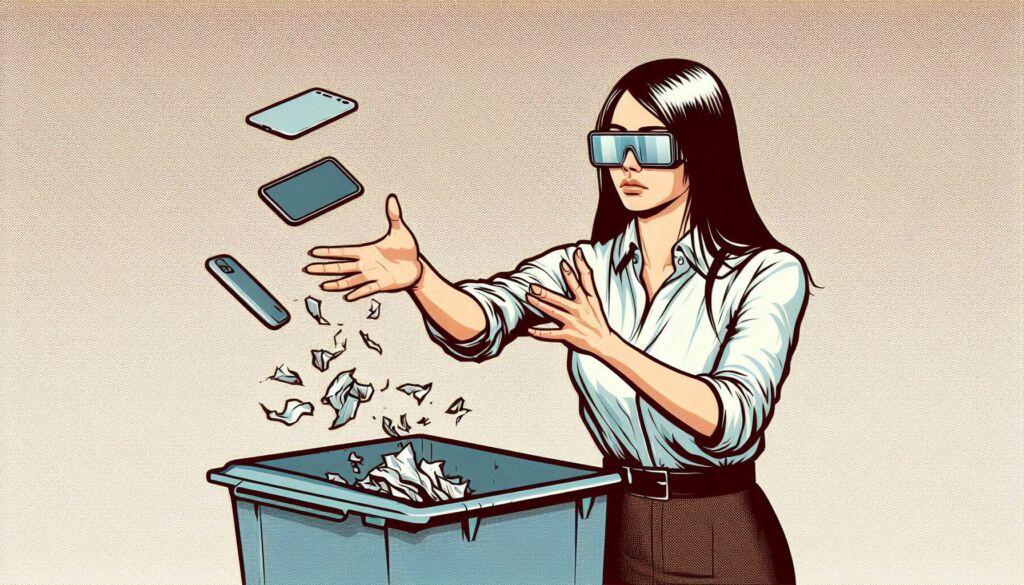Screened Out: OpenAI, Hardware and the Future of Ad Tech
by Shirley Marschall on 4th Jun 2025 in News

In her latest feature, Shirley Marschall gazes into our AI future, and looks at what a hardware driven ad tech experience could mean for the industry...
Alright, we’ve officially entered the spaghetti phase of AI hardware.
Big tech and scrappy startups alike are throwing everything at the wall - voice pins, smart glasses, AI rings, mysterious screenless devices - to see what sticks. It’s chaotic, ambitious, and very on brand for an industry that moves fast and breaks things (especially consumer expectations).
Somehow, AI didn’t just disrupt hardware. It resurrected it and is now hoping to turn it into gold.
Smart glasses, augmented reality, spatial computing; these are no longer interred in the cringe-metaverse graveyard anymore. They’re back. But this time, not as avatars in legless virtual meetings. They’re showing up as practical, wearable interfaces - ones that whisper rather than shout. That enhances reality instead of replacing it.
The world becomes the PC, not the one on your desk, but a new kind of operating system, stitched into the physical environment.
The question is: will we evolve from hunchbacked phone zombies into upright, glass-wearing zombies muttering to ourselves?
The next interface isn’t a screen(?)
Let’s take stock.
Meta is pushing out Ray-Ban smart glasses with camera, voice, and AI integration. Apple is teasing vision hardware and smart glasses (and yes, the Apple Watch just turned 10!). Google keeps circling the space, and OpenAI’s recent USD$6.5bn (£4.8bn) acquisition of Jony Ive’s (the legendary product designer behind the iPhone) company suggests they’re building something new entirely - a device with no screen, no keyboard, and no existing category.
If that sounds ambitious, don’t worry, there’s more where that came from: Spatial computing, the ability for machines to perceive and interact with the physical world, combining AI, AR, VR, sensors, and real-time processing to create digital experiences that live in space, not on screens.
Or put another way: the world becomes the interface.
So that’s on the hardware side of things but what does it mean for the digital world, for advertising, for ad tech, and of course, for the consumer?
When air space turns into ad space
You don’t scroll. You glance. You speak. You walk through the world, and information appears - contextually, ambiently, sometimes invisibly.
In theory, this sounds magical. But seriously: how long until someone tries to show you an ad while you’re crossing the street?
Because if there’s one thing ad tech is good at, it’s turning new surfaces into inventory.
And that’s where the big questions begin: what does advertising look like when everything is clickable? When sidewalks, car windows, and coffee shop walls become placements - not on your phone, but through your eyes? When you don’t “open an app,” you just… exist and the ad finds you? Will you glance at a shelf and get whispered recommendations? Will your wrist buzz as you pass a store? Will banner ads float into view as you cross the street?
We’ve spent the last decade trying to figure out where the user is on a screen. What happens when the user IS the screen? What will ads look like in a world where you don’t “open an app” to see them?
Which brings us back to an old programmatic promise: right person, right place, right time.
Could AI-powered hardware finally make that holy grail of programmatic feel real - not just on a screen, but in the world around us?
It’s a thrilling possibility…and a terrifying one. Depending on who’s in charge.
Virtual air rights, attention real estate and the ad tech dilemma
If the physical world becomes an interface, who owns the air? Yes, that’s a serious question.
Cathy Hackl, founder of Future Dynamics, put it sharply: “When you expand computing into the physical world and the world becomes a canvas or real estate, you also have to start thinking about something called virtual air rights. So who owns the air around me? Who can show me things?”
It’s a valid question - and not just for regulators. Because if the world becomes a surface, advertisers will inevitably want to rent a piece of it.
Do brands need to bid on virtual ad zones? Will we have spatial ad blockers for our smart glasses? Will consumers demand ownership of the attention layers surrounding them?
And what will the first “glasses ad format” look like?
It can’t be disruptive, or users will simply rip off the glasses and toss them in a drawer…next to the 3D TV and that fitness ring you stopped charging.
Advertising in this world has to be ambient, intuitive, and welcome. It has to be emotionally intelligent. Which is, frankly, not where most digital ads are right now.
The real ad tech challenge: From targeting screens to designing experiences
For the past 20 years, we’ve optimised everything for rectangles: phones, tablets, laptops. We knew where the screen ended and where the user began.
Spatial computing erases that boundary.
Suddenly, context becomes physical. Measurement becomes multidimensional. And creativity has to play by entirely new rules.
How do you track engagement when there’s no “click”?
How do you deliver relevance without overwhelming someone’s field of vision?
And how do we ensure this doesn’t become a dystopian mess of floating pop-ups and voice-activated call-to-actions at every corner?
Final thought: Seduction, not saturation
The next phase of digital experience is unfolding in the physical world. That means the next phase of advertising has to earn its place in that world. If we treat this like another inventory dump, we’ll lose the moment.
But if we approach it with care - if we create ads that belong in space the way good architecture belongs in a skyline - we may just be entering the most exciting chapter of advertising yet.
Right now, there are more questions than answers. More promises than products.
One thing’s for sure though: it won’t be boring - not for consumers, not for marketers, and definitely not for regulators.
And who knows…maybe it’ll be something as unsexy as battery life that kills the AI hardware dream. Stranger things have failed (like the metaverse, remember?)
Ad NetworkAd TechAIVirtual RealityVR








Follow ExchangeWire